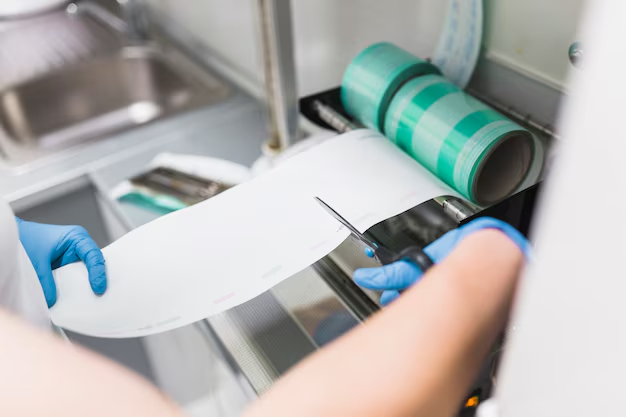Clutter-Free Kitchen: The Ultimate Guide to Removing Mold from Refrigerator Seals
Ask any homeowner, and they’ll likely tell you that maintaining a clean refrigerator is key to keeping a pristine kitchen. However, one commonly overlooked area that can harbor dirt and mold is the refrigerator seal. These rubber gaskets are vital for keeping your appliance airtight, but their grooves can become a breeding ground for mold. Not only is this a hygiene issue, but mold can also impair the seal's ability to keep your fridge cool, affecting efficiency and increasing energy costs. Let’s dive deep into how you can tackle this problem effectively and safely.
🔍 Understanding Mold in Refrigerator Seals
What Causes Mold on Fridge Seals?
Mold spores are virtually everywhere, but they need the right conditions to thrive. Refrigerator seals can provide these ideal conditions: moisture from condensation, limited airflow, and food particles stuck in the seal grooves. These factors make the seal a cozy home for mold.
Why It's Crucial to Address Mold Quickly
Mold is not just unsightly; it can emit a musty odor and potentially affect the freshness of your food. If allowed to grow, mold can weaken the seal’s grip, which might lead to temperature fluctuations inside the fridge. By addressing mold early, you can maintain both hygiene and appliance efficiency.
⚙️ Getting Ready to Clean
Gather Your Supplies
Before you start cleaning, you'll want to gather some basic supplies:
- White vinegar or baking soda: Both are natural mold fighters.
- Warm water
- Soft cloth or sponge
- Old toothbrush or small scrubbing brush
- Spray bottle
- Protective gloves
Safety First
Always prioritize safety. If you’re sensitive to mold or have mold allergies, wearing a mask and gloves is advisable to prevent any reactions.
🧽 Step-by-Step: Removing Mold from Refrigerator Seals
Step 1: Prepare Your Cleaning Solution
For Vinegar Solution:
- Mix equal parts of white vinegar and warm water in a spray bottle. Vinegar is a natural deodorizer and its acidity can help break down mold.
For Baking Soda Solution:
- Mix one tablespoon of baking soda with a cup of warm water to create a gentle yet effective cleaning paste.
Step 2: Apply the Solution
Spray the vinegar solution generously onto the affected areas of the seal. If you're using the baking soda paste, apply it using a clean cloth or sponge. Let the solution sit for 5 to 10 minutes. This will loosen the mold, making it easier to scrub away.
Step 3: Scrub Away the Mold
Using an old toothbrush or small brush, gently scrub the seal's grooves. Pay extra attention to the corners and crevices where mold tends to hide.
Step 4: Rinse and Wipe
Dampen a clean cloth with warm water and wipe the seals thoroughly to remove any residue of the cleaning solution and loosened mold.
Step 5: Dry Completely
Make sure to dry the seals completely using a soft, dry cloth. Moisture left on the seals can encourage new mold growth.
🔄 Maintaining Mold-Free Refrigerator Seals
Regular Cleaning Routine
To prevent mold from reoccurring, incorporate a regular cleaning routine into your kitchen maintenance:
- Wipe down the fridge seals with a solution of vinegar and water every month. This step takes only a few minutes but can significantly extend the seals' lifespan.
- Ensure that food particles are not left behind during cleaning. Pay special attention to fruit and vegetable juices that can cause sticky residue.
Check Temperature Settings
Keep your refrigerator set at the recommended temperature to minimize condensation. Usually, maintaining a fridge temperature around 37–40°F (3–4°C) works well to keep moisture under control.
Examine Seals Regularly
Inspect seals for any signs of wear and tear. If the seal is worn out or damaged, it will be difficult to keep clean and might need replacement to maintain the appliance's efficiency.
📑 Quick Reference Summary
Here's a handy bullet-point list to keep things in check! 📝
Ingredients for Cleaning:
- White vinegar or baking soda
- Warm water
- Soft cloth, toothbrush, gloves
Steps to Remove Mold:
- Prepare vinegar or baking soda solution.
- Apply generously to moldy areas.
- Let it sit for 5-10 minutes.
- Scrub gently with a brush.
- Rinse and dry completely.
Preventive Tips:
- Clean seals every month.
- Keep fridge temps stable.
- Inspect for damages regularly.
🌟 Closing Thoughts
Cleaning your refrigerator seals not only improves the overall hygiene of your kitchen but also maintains your fridge's efficiency. By following these simple, cost-effective steps, you can ensure that your appliance runs smoothly and remains odor-free. Small, consistent actions often lead to the best outcomes, making your kitchen a fresher, happier place. Remember, maintaining a clean fridge isn’t just a chore; it’s a step toward healthier living. Happy cleaning! 🧼🍽️
